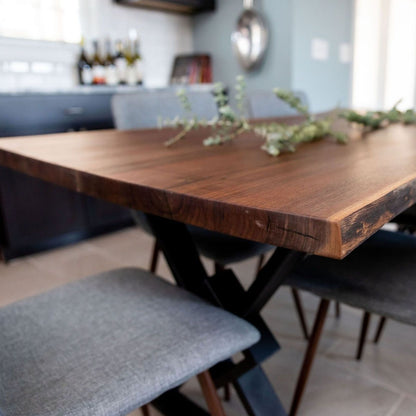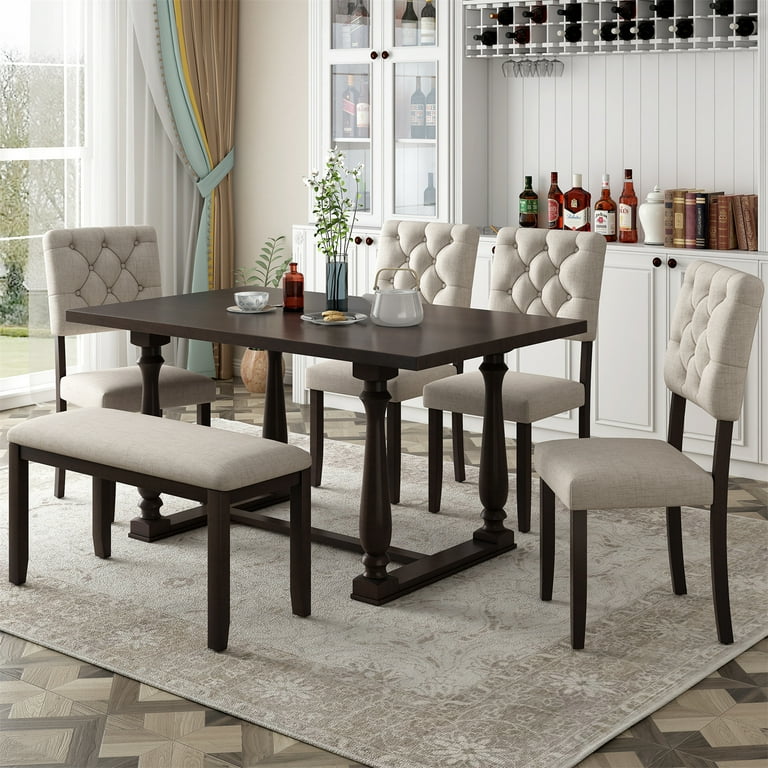How to Maintain and Care for Your Dining Room Table Legs
How to Maintain and Care for Your Dining Room Table Legs
Blog Article
From Traditional to Modern: Locate the Suitable Dining-room Table Legs for Your Style
While traditional layouts such as cabriole and transformed legs evoke a feeling of ageless elegance, contemporary designs like hairpin and geometric options offer an opportunity for striking aesthetic passion. As you take into consideration these components, the question remains: just how can you flawlessly integrate these diverse leg styles to produce a harmonious dining experience?
Understanding Table Leg Styles
The range of dining-room table leg styles can substantially influence both the aesthetic appeals and capability of the area. Each leg style contributes one-of-a-kind practical functions and visual elements, satisfying varied layout choices and usage demands. Comprehending these styles is essential for choosing the appropriate table that lines up with your total interior style vision.
For example, tapered legs use a tidy, classic appearance that can improve a room's sophistication, while stand bases supply security and make best use of legroom, making them perfect for smaller sized spaces. Hairpin legs, a trademark of mid-century contemporary design, present a commercial panache, allowing for an airy, open feel. Likewise, trestle legs evoke rustic appeal, offering robust support and a sense of timelessness.
Wood legs can bring warmth and texture, whereas metal choices often communicate a streamlined, modern vibe. Ultimately, comprehending table leg designs is essential for creating a natural dining area that mirrors personal style while guaranteeing practicality and convenience.
Typical Table Leg Options
When picking dining-room table legs, typical alternatives often symbolize classic style and workmanship. These layouts show an abundant heritage and a commitment to top quality, making them ideal for those who value classic aesthetic appeals.
Among the most renowned typical leg designs is the cabriole leg, defined by its elegant rounded form. This layout usually features ornamental makings and is most commonly located in Queen Anne and Chippendale furniture. An additional prominent choice is the transformed leg, which boasts a collection of smooth, rounded shapes that give a traditional look while preserving security.
Furthermore, the straight leg, while basic, uses a unadorned and durable framework that can blend effortlessly with a selection of tabletop designs. For those drawn to ornate describing, claw-and-ball feet legs stimulate a sense of grandeur and can function as a stunning centerpiece in any kind of dining area.
Finally, pedestal bases, although not strictly legs, offer an alternative standard alternative that permits ample legroom and can be beautifully carved. Each of these conventional leg styles adds to the total setting of a dining-room, marrying feature with visual allure.

Modern Table Leg Styles
Modern table leg styles use a diverse variety of styles that stress tidy lines and cutting-edge materials. These layouts commonly focus on capability while functioning as striking centerpieces within a dining space. Minimalist visual appeals prevail, with legs crafted from products such as metal, glass, and engineered wood, which add to a modern and ventilated feel.
One preferred style is the barrette leg, defined by its slim, conical framework that supplies stability without overwhelming the table top (dining room table legs). This style is typically discovered in mid-century modern-day furniture and can easily match various table shapes. Another pattern is making use of geometric shapes, where legs might tackle asymmetrical or angular forms, including aesthetic interest and a touch of virtuosity

Blending Designs for Distinct Spaces
Frequently, house owners seek to produce unique dining spaces that mirror their individual design by blending different style elements. This technique permits the incorporation of diverse aesthetics, leading to an unified yet unique this contact form environment. As an example, pairing a rustic wooden table with streamlined, modern metal legs can produce a captivating comparison that elevates the room's overall allure.
In addition, integrating vintage table legs with contemporary table tops can stimulate a sense of background while preserving a modern-day perceptiveness. Such mixes not just display individual taste yet also motivate creativity, allowing homeowners to curate a space that feels both individual and inviting.
Shade plays an essential function in this mixing process; selecting table legs that match or comparison with the existing shade scheme can enhance aesthetic passion. Whitewashed legs can soften the daring of a dark table surface, producing a well balanced visual.
Tips for Choosing the Right Legs
Picking the right table legs is crucial for attaining both see this website performance and aesthetic allure in your dining area. Begin by considering the overall style of your room. Typical settings take advantage of legs that feature intricate carvings or turned layouts, while modern areas might call for sleek, minimal designs.
Next, evaluate the elevation and security of the legs. dining room table legs. Basic table range in between 28 to 30 inches in height, so ensure the legs match this dimension for comfort. Furthermore, robust products, such as hardwood or metal, can improve security and durability
Evaluate the leg shape too-- alternatives consist of straight, tapered, or pedestal layouts. Straight legs supply a traditional appearance, while conical legs can include a touch of beauty. Pedestal bases offer adequate legroom and are excellent for smaller rooms.
Final Thought
In summary, choosing the ideal dining space table legs calls for mindful factor to consider of both typical and modern-day styles. Traditional choices such as cabriole and transformed legs offer ageless beauty, while modern layouts like barrette and geometric forms offer a contemporary touch. By integrating leg style, height, and material with the overall décor, a cohesive and welcoming ambience can be accomplished. Inevitably, the selected table legs must reflect the wanted visual, boosting the dining experience within the space.
The variety of eating space table leg designs address can significantly affect both the appearances and performance of the room. Ultimately, recognizing table leg styles is crucial for developing a natural eating area that reflects personal design while ensuring usefulness and convenience.One of the most legendary conventional leg designs is the cabriole leg, characterized by its stylish bent shape. Straight legs supply a traditional look, while tapered legs can add a touch of beauty.In recap, picking the ideal dining area table legs calls for cautious factor to consider of both conventional and modern-day styles.
Report this page